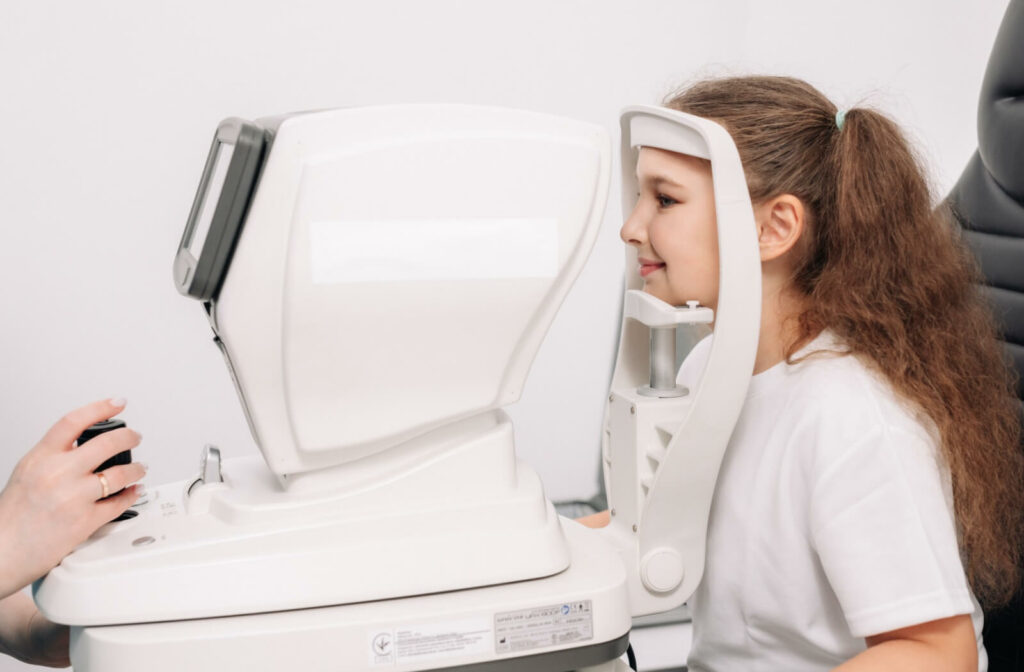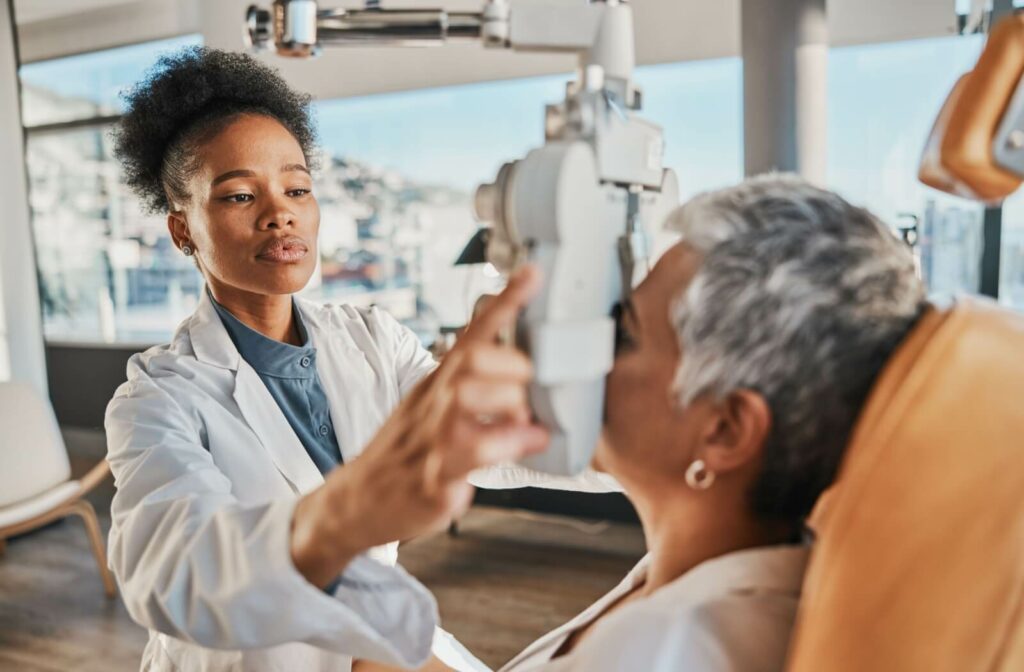You know it’s time for an eye check-up, but one question pops into your head: “How long will this take out of my day?”
Understanding the eye exam process can help you plan your schedule and feel more at ease. A comprehensive eye exam typically takes between 30 and 60 minutes, depending on your particular vision needs. This timeframe allows us to be thorough without taking up your whole day.
What to Expect During A Routine Eye Exam
A complete eye exam involves much more than just reading letters off a distant chart. It’s a full check-up for your vision and the health of your eyes. It’s a chance for us to connect, check on your vision, and help you maintain healthy eyes for years to come.
Your Health History & Pre-Exam
First, we’ll chat about your overall health, your family’s medical history, and any vision problems you’ve noticed. This information gives us a sense of your risk for various eye conditions.
Standard Vision Tests
This is the part you’re likely most familiar with. Vision tests check how clearly you see at different distances, allowing us to provide you with a prescription for glasses or contact lenses.
A Close Look At Your Eye Health
The team will also check the physical health of your eyes, from front to back. This includes looking for early signs of eye conditions, many of which don’t have obvious symptoms. Using special lights and lenses, we can check your optic nerve, retina, and blood vessels for any signs of trouble.
The Average Time For An Eye Test
So, how much time should you set aside on your calendar? While total time varies from person to person, you can plan for a general timeframe.
The 30 To 60 Minute Window
For most adults who don’t have major vision issues, a routine exam often falls within this window. 30—60 minutes gives us enough time to do a complete check of your eyes without making you feel rushed.
The Importance of a Thorough Check
A detailed exam takes time because it covers many bases, from updating your prescription to checking the pressure inside your eyes and examining your retina. Each step is important for a complete picture of your eye health. Think of it as preventive care for one of your most valuable assets—your sight.
Factors That Can Change Your Exam’s Length
Not every eye exam is the same. Various factors, ranging from your age to your vision needs, affect the total length of your appointment.
Your First Visit
If it’s your first time at our office, your exam may take a bit longer. We’ll take extra time to get to know you and your ocular history. We want to establish a strong baseline so we can track changes in your vision or eye health.
Exams For Children & Older Adults
Exams for young children or older adults can also require more time. With kids, we often use games to make it fun, while older adults may need tests for age-related conditions like glaucoma or cataracts.

Eye Dilation & Special Tests
If we need to dilate your pupils to get a better look at the back of your eye, this will add time, mostly because the dilation drops need a while to take effect.
Dilation gives us a wider view of the structures of the inside of your eye, which is important for monitoring certain health conditions like diabetes. If dilation is part of your exam, your vision may be blurry for a few hours afterwards.
Contact Lens Exams & Added Time
If you want contact lenses, you’ll need a contact lens exam fitting, which is different from a standard eye exam.
A contact lens exam involves special measurements of your eye’s surface to find the right fit, curvature, and lens material for you. These detailed measurements, which we cover in our contact lens fitting guide, are different from those taken for glasses, partly due to the fact that contacts sit directly on (as opposed to in front of) your eyes.
A Lesson For First-Time Wearers
If you’re new to contacts, part of your visit will include a training session. We’ll teach you how to safely handle your new lenses. We want you to feel completely confident before you leave our office.
- Safely insert & remove your lenses
- Properly clean & store them
- Follow a wear schedule
How To Prepare For Your Visit
A little preparation can help your appointment go smoothly and efficiently. It also helps you get the most out of your time with us.
What To Bring With You
It can be helpful to make a list of any questions you have. Please bring your current glasses or contact lenses and a list of any medications you take. Having this information on hand saves time and helps the eye doctor make informed recommendations for your care.
A Note On Your Drive Home
As mentioned, dilation can make your vision blurry and sensitive to light. Because of this, it’s a good idea to arrange for someone to drive you home if. We’ll always let you know ahead of time if dilation is planned for your exam, so that you can make arrangements.
Protect the Health of Your Eyes
Our team at The Vision Place is here to help you on your journey to clear vision and healthy eyes. When you’re ready to see an eye doctor in San Antonio, feel free to book your exam with us. We look forward to seeing you!


